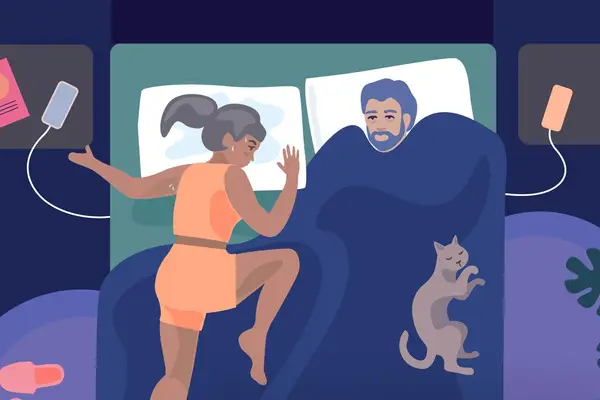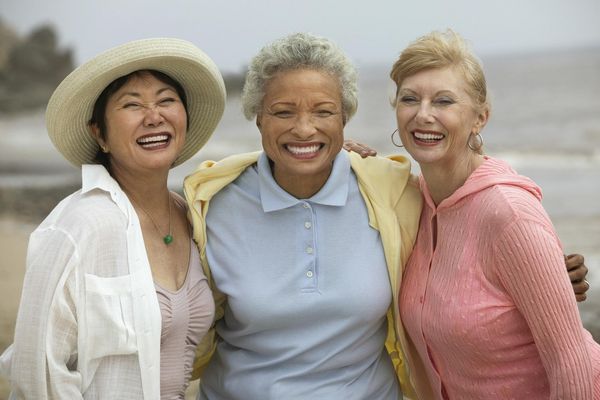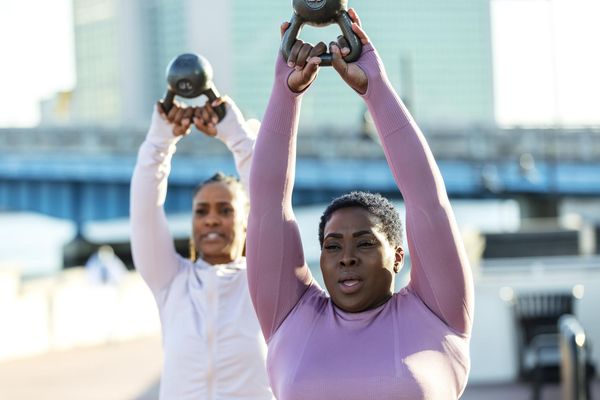Confession: I think I have turned into one of those slow walkers.
Perhaps it's because last week I was away visiting the West Coast and was in unfamiliar—or less familiar—territory that I began to feel paranoid about falling and moved around a bit slower than my usual robust pace.
OK, I'm not really a s-l-o-w walker. But I am a bit more cautious than when I was younger.
Sure, I went on an adventure in San Diego and explored a huge aircraft carrier and climbed the steep metal and sometimes-challenging stairways of the USS Midway, full of fascinating historical tidbits that make you appreciate our military and all their sacrifices (not to mention the way they had to maneuver around and live an area that is full of low ceilings and hairpin turns).
And yes, I climbed the high seaside bluffs overlooking the Pacific Ocean of beautiful Torrey Pines State Reserve, a pristine area filled with sometimes challenging inclines and rocky terrain, but oh-so-worth every step.
Am I getting older?
Well, yes, thankfully I am ... we all are. But with that, I think, comes an increasing awareness that we need to be careful because the truth is this: s*@t happens. And when it happens to you when you're past 40 or 50, versus when it happens to you when you are in your 20s and 30s, it's usually worse. And scarier.
While it's true that falls—no matter what your age—are frightening and potentially serious, the older you get the more serious the consequences can be, especially if you're suffering from osteoporosis, a condition that makes your bones brittle and prone to fracture.
Unfortunately two of my most serious and painful injuries have resulted from falls— one in my own home and one away from home. So you can bet I'm careful to do everything I can to prevent an accident like that from ever happening again.
And while it's true that you can't always prevent a fall—many times you don't even see it coming—there are ways to fall to try to prevent breaking a bone. Let's call it "fall etiquette." Who is to say that your mind will work faster than your body in this instance? But it's worth knowing, and learning, in the event your mind can save you from unnecessary danger.
Try to fall forward or backward (on your butt), because falling sideways can injure (or break) a hip. Face it, most of us have a lot more padding in the back than on the side, and what's a little black and blue compared to a break?
If you there is something nearby that you can grab, use your hands to grasp it; this could help break your fall.
Why is it so important to try to avoid a hip fracture? In 2007, U.S. hospitals admitted 281,000 people age 65 and older with hip fractures, 90 percent of which occurred from falls, according to the Centers for Disease Control and Prevention. Sadly, complications from hip fractures often lead to death. One out of five hip fracture patients dies within a year after breaking a hip. Many more never return to the same level of mobility and independence as before the injury.
It may sound obvious—or something only "old" people need to worry about—but there are ways you can plan in advance to keep you fall-free:
Outdoors:
- Wear rubber-soled shoes to prevent slipping. (Don't believe me? Think about the last time you slipped on a floor or slick sidewalk because you were wearing hard-soled shoes.)
- If sidewalks are slick, opt to walk on the grass instead, if possible.
- If sidewalks and walkways are icy (sorry, folks, winter is on its way), use kitty litter or salt before walking.
Indoors:
- Keep rooms as clutter-free as possible, especially floors. (One of the falls I took happened when I tripped over a pair of sneakers sitting on the floor near the door.)
- Avoid walking in socks, stockings or slippers with slick bottoms.
- Make sure rugs have skid-proof backs or are tacked onto the floor.
- Keep a flashlight next to your bed for those late-night bathroom runs.
- In the shower or tub, use a nonskid bath mat.
- Make sure stairs have adequate lighting and rails on either side.
- Don't substitute a chair for a stepstool. Use a sturdy stepstool meant for that purpose, and make sure it has wide steps (a handrail would also give you added support).
And of course, it's best to be proactive and do all you can to make sure you don't fall in the first place.
Lots of exercises can help you with your balance. The Mayo Clinic has a good slideshow to demonstrate some exercises.
You might also want to read:
Thrown off Balance: Feeling Dizzy
Easy Ways to Improve Your Stability and Strength







